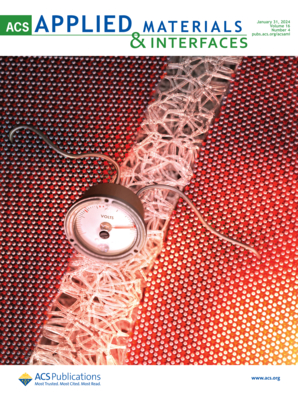产生微生物群替代状态的确定性和随机过程
IF 8.3
2区 材料科学
Q1 MATERIALS SCIENCE, MULTIDISCIPLINARY
引用次数: 0
摘要
微生物组的结构通常被划分为离散或半离散类型,这些类型在群落范围的功能特征上可能存在差异。阐明微生物组组成的这种 "替代状态 "的产生机制一直是生态学和微生物学的主要挑战之一。通过对实验微生物组的时间序列分析,我们在此表明,确定性和随机性生态过程都会驱动微生物组替代状态的分化。我们将物种丰富的源于土壤的微生物组引入八种类型的培养基中,并进行了 48 次重复,监测了六个时间点上群落组成的变化(8 种培养基 × 48 次重复 × 6 个时间点 = 2,304 个群落样本)。我们随后证实,在确定性和随机性群落过程中,微生物群落结构在八种培养基的每一种条件下都会分化成几种状态类型。换句话说,在相同的环境下,微生物群落结构分化成了少数可重复的组成。这一事实表明,不仅存在导致群落规模资源利用特定平衡的选择性力量,而且存在人口漂移(波动)对微生物组组合的影响。基于参考基因组的分析进一步表明,观察到的替代状态在生态系统级功能方面存在差异。这些发现将有助于我们研究如何通过改变生态群落组成的 "稳定性景观 "来控制微生物组的结构和功能。本文章由计算机程序翻译,如有差异,请以英文原文为准。
Deterministic and stochastic processes generating alternative states of microbiomes
The structure of microbiomes is often classified into discrete or semi-discrete types potentially differing in community-scale functional profiles. Elucidating mechanisms that generate such “alternative states” of microbiome compositions has been one of the major challenges in ecology and microbiology. In a time-series analysis of experimental microbiomes, we here show that both deterministic and stochastic ecological processes drive divergence of alternative microbiome states. We introduced species-rich soil-derived microbiomes into eight types of culture media with 48 replicates, monitoring shifts in community compositions at six time points (8 media × 48 replicates × 6 time points = 2,304 community samples). We then confirmed that microbial community structure diverged into a few state types in each of the eight medium conditions as predicted in the presence of both deterministic and stochastic community processes. In other words, microbiome structure was differentiated into a small number of reproducible compositions under the same environment. This fact indicates not only the presence of selective forces leading to specific equilibria of community-scale resource use but also the influence of demographic drift (fluctuations) on the microbiome assembly. A reference-genome-based analysis further suggested that the observed alternative states differed in ecosystem-level functions. These findings will help us examine how microbiome structure and functions can be controlled by changing the “stability landscapes” of ecological community compositions.
求助全文
通过发布文献求助,成功后即可免费获取论文全文。
去求助
来源期刊

ACS Applied Materials & Interfaces
工程技术-材料科学:综合
CiteScore
16.00
自引率
6.30%
发文量
4978
审稿时长
1.8 months
期刊介绍:
ACS Applied Materials & Interfaces is a leading interdisciplinary journal that brings together chemists, engineers, physicists, and biologists to explore the development and utilization of newly-discovered materials and interfacial processes for specific applications. Our journal has experienced remarkable growth since its establishment in 2009, both in terms of the number of articles published and the impact of the research showcased. We are proud to foster a truly global community, with the majority of published articles originating from outside the United States, reflecting the rapid growth of applied research worldwide.
 求助内容:
求助内容: 应助结果提醒方式:
应助结果提醒方式:


